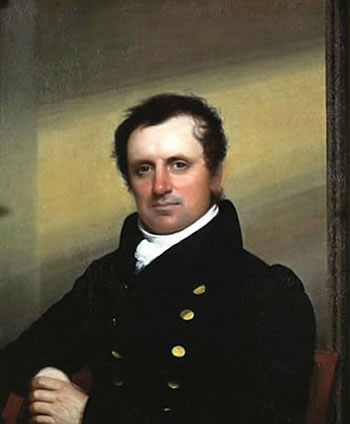The Highlands, N.J. Timeline
| 1525 May | Portuguese explorer, Estevan Gomez, sails for Charles V of Spain, sees Highlands area. |
| 1529 | First map of Highlands area, made by Spanish Diego Ribero, names Sandy Hook as Cabo de Arenas (cape of sands) and the river as Rio de Santiago (river of St. James). |
| 1609 September 2 | Henry Hudson first sees the Highlands area. |
| 1609 September 6 | John Coleman of Hudson's crew is first European casualty in North America, killed by a Lenape arrow through the neck. |
| 1678 | Richard Hartshorne settles in the Highlands. |
| 1678 | Hartshorne's deed for Sandy Hook and all activities by Indians there effectively removes Lenape from the entire Highlands peninsula. |
| 1704 June 28 | A French privateer crew plunders two houses at Highlands. |
| 1734 | Highlands' oldest surviving house is built on Portland Road between Thompson and Riker Streets (It has a secret tunnel of unknown date leading from its cellar to the river). |
| 1762 | The first single beacon lighthouse may have been built on the site of the Twin Lights, according to uncertain written evidence. |
| 1777 February 13 | First battle in Monmouth County, the Battle of Navesink, when 170 British troops attack and rout patriot Monmouth County militia post at the Esek Hartshorne house. |
| 1778 June 29-July 5 | British General Clinton "retreats" to Sandy Hook through Highlands after his defeat at the Battle of Monmouth. |
| 1782 April 12 | Captain Joshua Huddy hanged at Water Witch. |
| 1783 December 30 and 31 |
Eleven seamen desert British ship HMS Assistance and reach Highlands shore. They are pursued by an 14 man force led by Lieut. Hamilton Douglas-Halyburton, all of whom perish in a snow storm and are found on the Highlands shore. Most are buried in a common grave on Sandy Hook. |
| 1790 June | President George Washington, Thomas Jefferson, and Alexander Hamilton go on fishing trip off Highlands. |
| 1790 | Philip Freneau writes his poem "Navesink" focused on the Highlands hills. |
| 1798 | First hotel is started by Nimrod Woodward in the Esek Hartshorne house. The start of Highlands tourism. |
| 1805-1811 | James Fenimore Cooper serves in the navy doing shore patrol of the Raritan Bay area and becomes familiar with Highlands. |
| 1812 or before | Nimrod Woodward builds the "White House" hotel, the first located on the river. |
| 1812 June 19 | Militia troops stationed in Highlands against a possible British attack upon the area. |
| 1813 March 31 | Fort Gates is established in Highlands hills with rifle and artillery companies against a possible British attack. |
| 1813 July 4 | British sloop Eagle captured in Sandy Hook bay by American troops disguised as fisherman. |
| 1819 | The steamboat Franklin is first to stop at Highlands en route to New York, beginning the steamboat age which runs for 110 years. |
| 1828 | The first Twin Lights are built, with Joshua Doty as first Keeper. |
| 1829 | Visual telegraph is established on Twin Lights hill. |
| 1830 | James Fennimore Cooper writes The Water Witch, whose setting is the Highlands hills. |
| 1832 | The steamboat Saratoga is the first boat to serve Highlands specifically from New York City. |
| 1834 | New York Merchants Exchange establishes first semaphore telegraph on Twin Lights hill, linking Sandy Hook, Staten Island, and Manhattan with ship arrival reports. |
| 1841 | The south tower light of the Twin Lights receives a Fresnel lens. |
| 1841 | Schenck Hotel is established at river. |
| 1843 February 13 | The ship North America is wrecked on Sandy Hook opposite Plum Island with 89 rescued and 510 dead. |
| 1844 | Joseph J. Thompson is Keeper at Twin Lights 1844--1850. |
| 1847 | Col. William Jones of New York buys and expands the Esek Hartshorne/Woodward Hotel to hold 200 persons. His daughter, Angeline establishes a school in the hotel. |
| 1850 | Highlands population approximately 100 persons. Irish immigrants begin to come to Highlands. |
| 1851 | Thompson's Atlantic Pavilion started on river. |
| 1852 | First Post Office at Highlands, Peter F. Schenck, Post Master. |
| 1853 | Morse magnetic telegraph comes to Marine Observation site on Twin Lights. |
| 1854 | James Farrell begins news service using carrier pigeons, continuing until 1866 and transatlantic cable. |
| 1854 | Sea View Hotel is built on river by Ann Jarvis of New York |
| 1856 | The James W. McGarry house (Highlands' second oldest) is built at Navesink Avenue and Valley Street, which would serve as a meeting place for area Catholics. |
| 1857 | President James Buchanan visits Highlands and stays at Thompson House. |
| 1857 | Infamous murder of Albert Moses by James Donnelly at Sea View Hotel. |
| 1857 winter | All waters in rivers and bays frozen as far as Long Island. |
| 1858 summer | General Albert Meyer experiments with semaphore wig-wag flag signals on Twin Lights hill to Ft. Hamilton on Staten Island. |
| 1858 | Neptune Club started on river between Upper and Lower Rocky Points. |
| 1858 | Fort on Sandy Hook is begun. |
| 1860 | Highlands population 213 persons. |
| 1860 | Raritan and Delaware Bay Railroad connects New York via steamboat at Port Monmouth to Red Bank. |
| 1861 April | Civil War starts and soldiers are stationed on Sandy Hook. |
| 1862 | The present Twin Lights are constructed, with Keeper Gordon B. Sickles. |
| 1862 | September several Highlands men volunteer to fill the state quota of men for the Union army. They mustered at Camp Vredenburg near Freehold, having signed up for a 9 month period, they are assigned to the 29th Infantry Regiment. |
| 1863 | The U. S. Army Signal Corps is established after General Albert J. Meyer is successful with wigwag flag signals in 1858 from Twin Lights to Fort Hamilton, Staten Island, N.Y. |
| 1863 | Highlands Methodists met in small groups in private homes |
| 1865 July 31 | The Long Branch and Sea Shore Railroad begins its run between Long Branch and Spermaceti Cove steamboat dock, with Highland Station on Sandy Hook at the present bridge site, thus bringing New York City vacationers to the shore. |
| 1865 | The first steam ferry of James Schenck carried city vacationers from the Long Branch and Sea Shore Railroad station across to Highlands. |
| 1866 | Merchants Steamboat Company's Sea Bird begins the New York to Highlands run, ending in 1926. |
| 1866 | The Jackson Club comes to Highlands and later (1868) builds its Jackson Club House on Shrewsbury Avenue at the foot of Jackson Street. |
| 1866 | Merchants Steamboat Company's Sea Bird begins the New York to Highlands run, ending in 1926. |
| 1867 | Monmouth County School District 67 uses the School House at 46 Grand Tour (Highlands' third oldest) built as a gift by Mary and Edward Hartshorne. |
| 1870 | The Spermaceti Cove steamboat dock is abandoned due to shallow water and one is built at Horseshoe Cove for the Long Branch and Sea Shore Railroad. |
| 1872 | Noted engraver Granville Perkins comes to Highlands to sketch several scenes for the first edition of Picturesque America. |
| 1872 December 5 | The first Highlands-Sea Bright bridge was opened by the Highlands Bridge Company of Edward and Benjamin Hartshorne. |
| 1874 August 7 | The Sandy Hook Proving Grounds are established on Sandy Hook. 1875 Highlands population is 305 persons. |
| 1875 July 1 | The draw bridge is struck by a sloop and wrecked. |
| 1875 | Western Union takes over marine observation and builds a tower/residence for its operators. |
| 1875 | Rev. Abraham Allen arrives in Highlands and establishes the Dutch Reformed church, parsonage, and graveyard on lots at Fifth St. and Valley St. |
| 1875 October 9 | The Water Witch House, located on the block between Navesink Ave., the bluff, Rogers and Waddell Sts., burns to the ground. |
| 1876 | William Cullen Bryant publishes the Centennial Edition of Picturesque America in which Highlands is featured in picture and text as the leading site. |
| 1877 | Public School is built at Navesink Avenue and Miller Street. The school house built in 1867 (q.v.) by the Hartshornes is rented by area Catholics as a chapel until 1888 (q.v.) when the first church is built. |
| 1878 June 27 | The second Highlands bridge is opened with a wider draw for boats. |
| 1878 | The first public school is built at public expense at the NE corner of Miller Street and Navesink Avenue, now the site of Horizon Condominiums. |
| 1879 | Atlantic Pavilion built by Benj. Hartshorne, become Swift House. |
| 1879 | The Long Branch and Sea Shore Railroad becomes part of the Southern Railroad. |
| 1880 | Highlands population is 460 persons. |
| 1882 | The Central Railroad of New Jersey takes over the Southern Railroad. |
| 1882 | The steamboat Albertina begins her New York to Highlands run for the Merchants Steamboat Company with its dock before the Swift House just south of the present bridge. It ran until 1925. |
| 1883 November 27 | The Church of Our Lady of Perpetual Help is incorporated in Highlands. |
| 1883/84 | The Twin Lights are powered by mineral oil and produce 20,000 candle power. |
| 1884 | The Highlands School at Miller Street is expanded to two stories 40 feet by 80 feet. |
| 1885 | Walt Whitman visits Highlands and writes two poems, "Fancies at Navesink." |
| 1885 May 10 | First Methodist Episcopal Church parish is established. |
| 1886 June | Monmouth County buys the Highlands bridge for $10,000. |
| 1886 August 22 | The first Highlands Methodist (Episcopal) Church is built on Miller Street near Shore Drive. |
| 1887 | William Sandlass begins the Highland Beach Resort. |
| 1888 | The first church building of Our Lady of Perpetual Help is constructed at Navesink Avenue and Miller Street. |
| 1889 Summer | Harper's Magazine writer F. E. Fryatt visits Highlands and writes extensively of its beauty, sites, and quaint way of life. |
| 1889 | Noted writer Gustav Kobbe visits Highlands and describes town life and writes the first description of the clamming industry. |
| 1889 | The south tower of the Twin Lights is fitted with an electric arc light to produce 25,000,000 candle power output. |
| 1892 Spring | The Central Railroad of New Jersey extends its track from Atlantic Highlands to Highlands at the river by Bahrs restaurant. |
| 1892 May 30 | The Central Railroad of N.J. open the new "criss-cross" bridge, allowing train, pedestrian, and vehicular traffic to use a common center/draw section. |
| 1892 July 9 | Mirages appear all afternoon in the skies off Highland Beach. |
| 1893 | The Patten Line steam boat called the Mary Patten begins her run from New York to Highlands and Long Branch, ending in 1930/31. |
| 1893 | The Patten Line commissioned the Little Silver this year. She ended in 1930 having been sold (with the Mary Patten) to the Gelhaus line called the Highlands, Long Branch, and Red Bank Steamboat Company. |
| 1894 April 11 | Schooner Kate Markee and 8 sailors lost on Highland Beach. during a fierce gale. |
| 1894 January 30 | The first fire company in Highlands is organized by 25 volunteers as the Seaside Fire Department. |
| 1895 | Highlands population is 1,080 persons. |
| 1895 | The Postal Telegraph Company establishes Marine Observation site on Twin Lights with agent Stephen Murray. |
| 1895 | The Water Witch Club purchased all the lands of Monmouth Hills and the present Water Witch area of Highlands to develop the lands for exclusive summer vacation sites for wealthy "members" of the club. |
| 1895 | Water Witch train station is constructed at Water Witch Avenue and Shore Drive. |
| 1895 October 30 | Fort Hancock is established on Sandy Hook. |
| 1896 | summer Elisha Driscoll of Highlands discovers skeletons on the Spermaceti Cove island now called Skeleton Hill island. |
| 1898 | The Highland House Hotel was opened by William F. Patterson. |
| 1899 September 30 | Marconi uses radio-telegraph to report on Admiral Dewey Ship Parade. |
| 1899 October 16-17 | Marconi demonstrates the first practical use of radio telegraphy by sending Morse code reports of the America's Cup Races off Sandy Hook to a receiving station at the Twin Lights. |
| 1900 February 9 | The second Highlands fire company is organized as the Highlands Star Hook and Ladder Company. The old Seaside Fire Company (cf.1894) is renamed the Columbia Hose Company Number One. |
| 1900 February 13 | Legislation is introduced in the N.J. Assembly to create the Borough of Highlands. |
| 1900 March 22 | Highlands becomes a borough having separated from Middletown Township. |
| 1900 June 4 | The first United States Census is taken of the new community, the Borough of Highlands, and lists a population of 1,228 persons. |
| 1901 | The Thomas Patten, the only steel hulled boat and 201 feet long, began its run, ending in 1919. |
| 1901 | The Rectory of O.L.P.H. is built, along with a parish hall (called St. Mary's Lyceum located at the corner of Miller St. and Highland Ave.) by pastor Thomas T. Sweeney, at 141 Navesink Avenue. |
| 1903 | The King Boat works is begun by Stewart B. King on South Bay Avenue. |
| 1904 March 14 and June 27 |
First Fire Code ordinances are passed by Council |
| 1905 November 1 | Sixty clammers unite to form the Baymen's Protective Association and purchase the Association Lot. |
| 1906 February 9 | Church of St. Andrew the Apostle is incorporated and purchases the old Dutch Reformed Church fronting on Fifth St. at Valley St. |
| 1906 | The Water Witch Development Company begins marketing lots in the Water Witch section. The first Water Witch boat basin is constructed. |
| 1906 | The Martin Hotel is built by Martin Gerbrach at the corner of Portland Road and Highland Avenue. |
| 1906 | The first Highlands Auditorium Theatre (the purple building) on Bay Ave, is opened by Harry Sculthorpe for moving pictures and vaudeville acts. |
| 1907 | Marconi Marine Radiotelegraph is removed from Twin Lights to near Belmar. |
| 1907 | The first public water system is constructed at Miller Street below the Public School, at the present location of the now unused well site and pumping station. |
| 1907 September 1 | The first trolley of the Jersey Central Traction Company arrives in Highlands from Campbell's Junction and Red Bank. |
| 1907 | The New Jersey Central Power and Light Company is given a franchise to supply the town with 45 electric street lights. |
| 1907 | The Creighton Hotel is built at 24 Bay Avenue. |
| 1907 | William H. Conners builds the first phase of the Cedar Grove Hotel. |
| 1907 | June A Board of Trade (Chamber of Commerce) is begun with 42 members. |
| 1908 April 22 | Grave of British officers and midshipmen buried in 1783 discovered on Sandy Hook. |
| 1908 September 3 | Corner stone is laid for the Highlands Methodist church on Bay Avenue. |
| 1910 May | First private home at 254 Navesink Avenue is electrified. |
| 1910 February 16 | Neptune Club is destroyed by fire. |
| 1910 July | First business is electrified, Johnson's Drug store at 165 Bay Avenue. |
| 1910 | The new Highlands post office was built at 71 Bay Avenue. |
| 1910 | Addition to school, two stories, 29 x 54 feet. |
| 1910--1923 | Gravelly Point summer residents live in tents |
| 1910 September 1, 2, 3 | The Highlands Businessmen's Association sponsors the first Highlands Carnival to celebrate the town's first 10 years. |
| 1910 | The Borough of Highlands purchases its first town hall, buying the Firemen's Hall at Bay Avenue and Valley Street. |
| 1910 | The Highlands Public School is doubled in size. |
| 1912 | Water Witch section officially becomes part of Highlands borough after a one vote majority votes in favor of it. |
| 1912 | The low and wet area of town in the triangle made by Bay Avenue, Shrewsbury Avenue and Miller Street is filled in and streets are laid out for houses to be built. |
| 1914 October 28 | Corner stone is laid for the Episcopal Church of St. Andrew the Apostle. The cemetery at Fifth and Valley is moved to All Saints and the old Reformed Church is sold and moved from there to become a shop on Bay Ave. |
| 1914 March | All Water Witch and lands south of Hillside Ave. along Portland Road become part of the Borough of Highlands. |
| 1915 | The old Thompson Pavilion, alias Thompson House/Hotel is torn down. |
| 1917 | Bahrs Restaurant is established in the old Michael McGuire boathouse by John and Florence Bahrs who came to Highlands in 1913. |
| 1918 | Dr. Everett Field removes bricks from Water Witch House and uses them to build a replica fireplace and chimney in his own home in Water Witch. |
| 1919 | Fred Bedle purchases Grandin Johnson's Drug store and opens his Bedle Drugs at 165 Bay Avenue. The shops ran under this name until 1990. |
| 1920 January 20 | Prohibition makes Highlands a center for illicit trade on water and land for illegal whiskey. |
| 1922 | The trolley line from Red Bank to Highlands is abandoned. |
| 1922 February 22 | The Burdge and Russell Bus Company assumes the old trolley route from Red Bank to Highlands. |
| 1923 Summer | The New (Highlands) Auditorium Theatre opens. The old Auditorium built in 1908 becomes the Auditorium Garage. |
| 1924 | In the Twin Lights an incandescent lamp replaces the arc light to produce 9,000,000 candle power output. |
| 1924 November 11 | Veterans Memorial by bridge is dedicated. |
| 1925 January 1 | New York City imposes ban on all Highlands clams; ban is lifted October 15, 1935. |
| 1925 | September Highlands Star begins. |
| 1925 | Sewers are laid along Bay Ave. and the street is paved in concrete. |
| 1925 May 27 | Navesink Ave. is paved with concrete. |
| 1926 April 1 | Highlands buys its public beaches at Miller St. and the bridge. |
| 1926 | The Boro Bus Company takes over bus service from Highlands to Red Bank. |
| 1926 March 22 | Highlands Lions Club is formed. |
| 1926 August 6 | Gertrude Ederle is the first women to swim across the English Channel, 35 miles in 14 1/2 hours. |
| 1927 | Highland House Hotel on Navesink Ave. burns to ground. |
| 1927 June 8 | State of the art garbage incinerator is opened on the site of Jenny Parker Manor |
| 1927 June 1 | An earth quake, with is epicenter in Long Branch, shakes Highlands. |
| 1928 May 22 | The Public School at Miller Street burns to the ground |
| 1929 | Highlands homes and businesses are connected to a sanitary sewer system and streets are paved and concrete sidewalks and curbs are laid down. |
| 1929 May 20 | Highlands American Legion Post is organized. |
| 1930 | Six Highlands firemen take first aid training and form the Highlands First Aid Squad. |
| 1930 | Parade Ground a novel of Army life at Ft. Hancock by Jacquelin Deitrick is published by Doubleday. |
| 1931 | The First Aid squad becomes independent of the fire department. |
| 1931 | The State of New Jersey opens the new concrete highway called Route 36 from Keyport to Highlands. |
| 1931 March 11 | First services are held in the newly renovated interior of St. Andrew the Apostle church. |
| 1931 August 17--19 | "Romance in Highlands" starring Joseph Dempsey and produced by Daniel Dorn of Red Bank is shown at the Highlands Auditorium Theater. |
| 1931 December | The new Highlands Public School at Water Witch Avenue and Navesink Avenue is dedicated. |
| 1932 | The last of the steamboats, the Little Silver, was scrapped. |
| 1932 August 11 | Concrete support work is begun for Highlands-Sea Bright bridge. |
| 1932 November 10 | Highlands is battered by a fierce storm bringing 2 feet of flood water onto all of Bay Avenue. |
| 1932 | The second church building of Our Lady of Perpetual Help parish is dedicated. |
| 1933 | The State of New Jersey Highway Department opens the present Highlands draw bridge, called the Million Dollar Bridge. The old bridge is rebuilt leaving only the rail crossing. Timber from the old vehicle bridge is used in a WPA project to build the Water Witch bulkhead. |
| 1933 August 19 | The Western Union Marine Observation Tower at Twin Lights is demolished and but operations are continued on Sandy Hook. |
| 1933 July 6 | N. J. state is permitted by Federal authorities to regulate the sale of beer (2.5%), as Prohibition begins to come to an end nation-wide and close to 40 licenses are sold in Highlands. |
| 1933 August 23 | James "Buff" Marson is murdered in the Albion Hotel resulting in an infamous trial of County Detectives for official misconduct. |
| 1934 March 9 | Clothing factory opens on site of old public school. |
| 1935 July 19 | A&P food store opens at Bay Ave. and Miller St. |
| 1935 August 1 | Radar or the "Secret Ray" is tested from Twin Lights hill. |
| 1935 September 30 | The Greenland Hotel is destroyed by fire. |
| 1936 September 24 | Dredging of the river channel allows spoils to fill in swamp areas in Water Witch. |
| 1943 | Western Union buys Postal Telegraph Company and closes the Marine Observation site at Sandy Hook. |
| 1944 September | A treacherously powerful hurricane devastates the Highlands, sweeping homes from foundations and carrying them blocks away. |
| 1945 | The Cedar Inn Restaurant is built on Navesink Avenue by Walter, Katherine, and Pop Knittle. |
| 1946 April 30 | USS Solar blows up at Earle Naval Pier. |
| 1947 | The novel The Swamp Willow about early Highlands town life is published by author Edwina Elroy. |
| 1947 summer | The Highlands boat basin at Washington Street is renovated. |
| 1947 | Katz's Confectionery is opened at 202 Bay Avenue |
| 1947 February 8 | The Methodist Church burns to the ground. |
| 1948 May 22 | The new and present day Highlands Methodist Church corner stone is laid. |
| 1948 April | The Highlands Gold Rush takes place after gold coins were found on the beach at Cedar Street. |
| 1950 summer | Golden Anniversary Celebration |
| 1950 August 30 | Kavookjian Field Living War Memorial opens. |
| 1950 May 18 | John Azzolina opens the Food Basket supermarket. |
| 1951 | O.L.P.H. establishes a convent at 130 Highlands Avenue for the Sisters who would open the first school in the church basement in September. |
| 1951 | Spring Burtis Perry opens Paradise Trailer Park. |
| 1951 August 9 | Council issues 30 liquor licenses. |
| 1951 August 15 | Route of Garden State Parkway is set to by-pass all bayshore towns. |
| 1951 September 15 | The New York-Keansburg-Long Branch bus company starts its run through Highlands. |
| 1952 | The Twin Lights are de-activated and shut off. |
| 1952 | Shadow Lawn Trailer Park opens. |
| 1952 | Air Raid Drills are held and safe Shelters are established in town. |
| 1952 April 25 | Ground breaking for VFW Post 6902 takes place. |
| 1953 November 17 | North East storm floods Bay Ave. with 3 feet of water. |
| 1954 January 15 | Ft. Hancock to become Nike Missile base. |
| 1954 late April | The last steam locomotive ran to Highlands on the Central Railroad of N. J. line. |
| 1955 April 29 | Highlands Community Center, Inc. is formed to convert and operate the old water pumping station building on Miller St. (at site of Frank Hall Park) as a Community Center. |
| 1955 November 2 | Twin Light Historical Society is founded. |
| 1956 July 1 | Highlands form of government changes from June primaries, November elections and January inaugurations to Faulkner Form B, Non Partisan with May at large elections for five councilmen who take office July 1 and elect from themselves who will be Mayor. All are for a three year term in office. |
| 1958 November 30 | The last train cars of the CNJ left Highlands and the line from Matawan to Atlantic Highlands died November 2, 1966. |
| 1959 August 6 | Twin Lights Museum dedicated and opened to the public. |
| 1960 September 12 | Hurricane Donna devastates Highlands. |
| 1961 October 8 | The present Borough Hall and Firehouse are dedicated. |
| 1962 March 6-7 | Three day powerful northeaster storm devastates Highlands. |
| 1962 July 14 | Sandy Hook State Park opens; Ft. Hancock continues through 1974. |
| 1962 September | Henry Hudson Regional School at 1 Grand Tour opens for the first year. |
| 1963 September | O.L.P.H. opens school classes in the new school building at Miller Street and Highland Avenue. |
| 1965 | Twin Lights is made a National Historic Site. |
| 1965 | Summer Conners Pool is built and opened to membership. |
| 1967 | Author Russell Peterson writes of nature in and about the Highlands in Another View of the City. |
| 1968 March | State prohibits parking along Rte. 36. |
| 1968 March 22 | Thomas Ptak is killed in action in Vietnam. |
| 1968 May 9 | Twin Lights Museum opens. |
| 1968 summer | Hydrofoil ferry service using a Russian built boat begins. |
| 1971 August | People's National Bank starts operation from a trailer at 34 Bay Ave. |
| 1972 September 28 | Highlands Senior Citizens club first organized. |
| 1973 November 1 | Robert Soleau seeks permission to operate a clam depuration plant near the Highlands bridge. |
| 1974 December 31 | Fort Hancock deactivated and Gateway National Recreation Area assumes control. |
| 1974 | Top of the East, now Eastpointe, the 14 floor Condominium, was begun. The foundation was laid in June 1974 and by June 1975 it was completed. |
| 1974 | The first condominiums in Highlands were started on and down the hill near Twin Lights. These were called Twin Light Terrace condominiums. |
| 1975 | Civil Service starts for Borough workers after voter approval in a referendum. |
| 1975 summer | Diamond Jubilee Celebrations |
| 1978 June | Borough Community Center on Snug Harbor Ave. is dedicated. |
| 1984 March 29 | Major storm hits Highlands with $3 million in damage and 4' of water in places. |
| 1986 June 21 | Ptak Towers Senior Citizen residence is dedicated. |
| 1986 July 15 | Direct Line Commuter Service begins ferry operation from the Clam Hut to Pier 11, New York. |
| 1989 May 2 | TNT Hydroline initiates commuter ferry service to Pier 11. |
| 1991 January 29 | Cipriani's alas the Cedar Inn burns to ground. |
| 1992 December 12 | Northeast storm batters Highlands with terrific destruction. |
| 1993 | The first Bed and Breakfast Inn in Highlands is opened at 2 Grand Tour: The Sea Scape Manor under the owners Bob Adamec, Sherry Ruby (married) and Gloria Miller (sister of Sherry). |
| 1993 | The motion picture Me and Veronica is filmed at Highlands using some local residents as extras. |
| 1993 September 16 | A replica of Henry Hudson's Half Moon comes to Highlands. |
| 1993 November | Voters approve sale of the water plant and system. |
| 1995 April--May | The Historical Society of Highlands is organized by first President Jane Horan. |
| 1995 August 25 | First Clam Festival is held |
| 1996 June 29 | First Farmers' Market come to town. |
| 1997 June 27 | "Welcome to Highlands, Gateway to Sandy Hook" sign is dedicated. |
| 1998 In July | The Water Witch House Bed and Breakfast, Highlands' second such inn, is opened at 254 Navesink Avenue, by Helen and John King. |
| 1999 January 3 | A large portion of the hillside at 65 South Linden Ave collapses and destroys the Highland Shores Condo unit number one, and partially damages number two. No persons are injured. |
| 1999 October 6 | Highlands Business Improvement District/Highlands Business Partnership wins council approval. |
| 2000 January 1 | Borough of Highlands begins its year-long Centennial Celebration. |
| 2001 November | Highlands' third history book is published by Arcadia Publishing, Highlands, New Jersey, authored by John P. King, in the series called the "Making of America." |







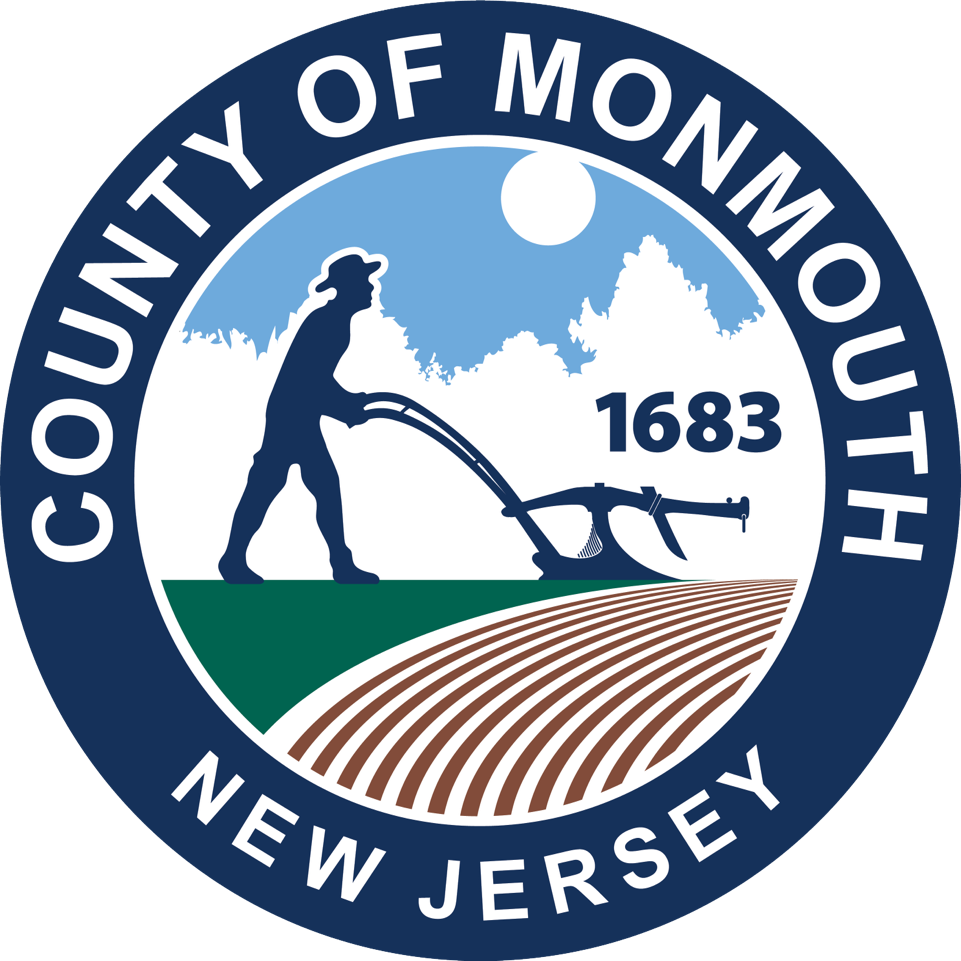



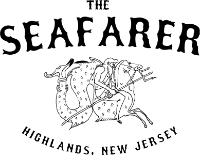
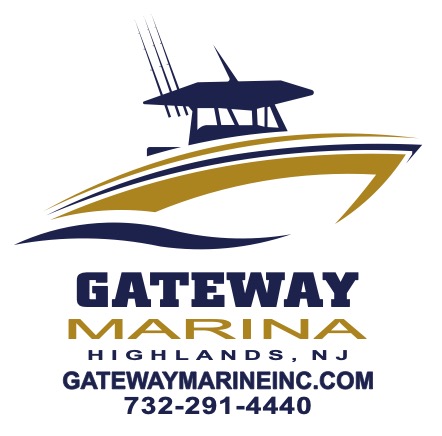




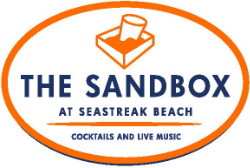

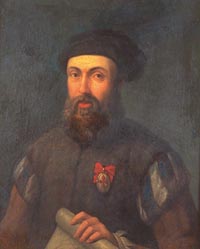 Esteban Gómez also known as Estevan Gómez, born Estêvão Gomes (c. 1483 Porto, † 1538 Paraguay River), was a Portuguese cartographer and explorer who sailed at the service of Spain in the fleet of Ferdinand Magellan, having deserted the expedition before reaching the Strait of Magellan, returning to Spain in May 1521. In 1524 he explored Nova Scotia province sailing South through Maine, where he entered New York Harbor, the Hudson River and eventually reached Florida in August 1525. As a result of his expedition, the 1529 Diogo Ribeiro world map outlines the East coast of North America almost perfectly.
Esteban Gómez also known as Estevan Gómez, born Estêvão Gomes (c. 1483 Porto, † 1538 Paraguay River), was a Portuguese cartographer and explorer who sailed at the service of Spain in the fleet of Ferdinand Magellan, having deserted the expedition before reaching the Strait of Magellan, returning to Spain in May 1521. In 1524 he explored Nova Scotia province sailing South through Maine, where he entered New York Harbor, the Hudson River and eventually reached Florida in August 1525. As a result of his expedition, the 1529 Diogo Ribeiro world map outlines the East coast of North America almost perfectly. In theory, Charles V was the most powerful monarch in Europe. A Habsburg, in his teens in 1516 he inherited Spain, which had been united by his grandparents Ferdinand and Isabella. In 1519 he succeded his paternal grandfather Maximilian I as Holy Roman Emperor.
In theory, Charles V was the most powerful monarch in Europe. A Habsburg, in his teens in 1516 he inherited Spain, which had been united by his grandparents Ferdinand and Isabella. In 1519 he succeded his paternal grandfather Maximilian I as Holy Roman Emperor.

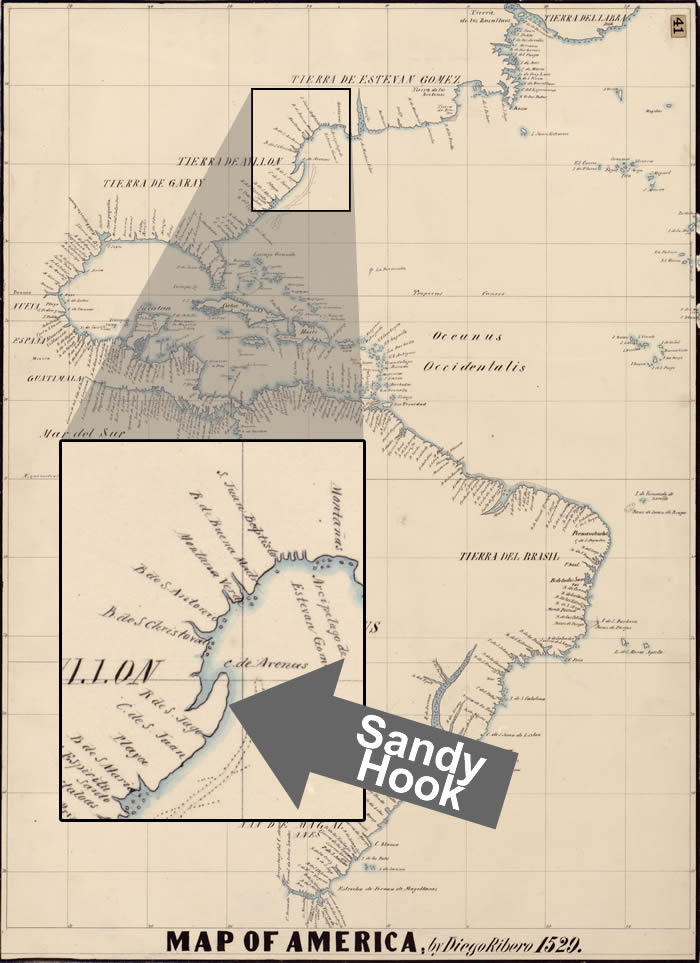
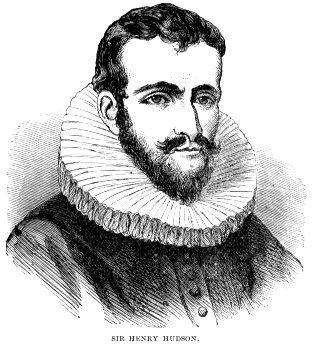
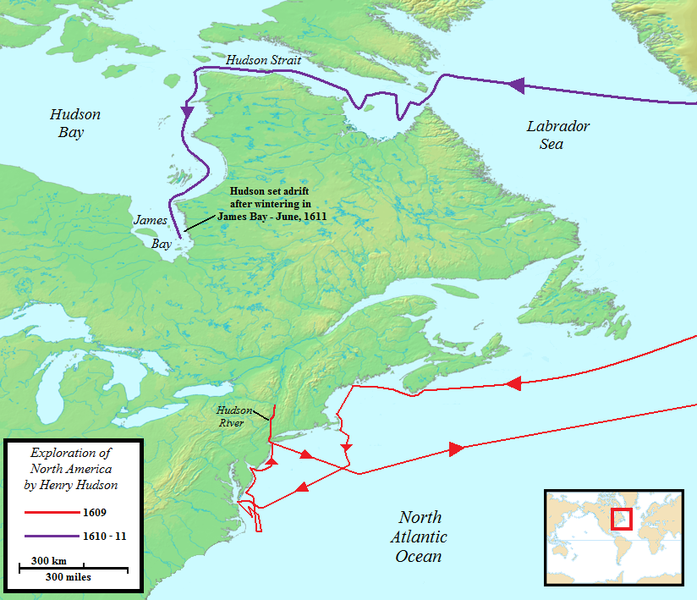
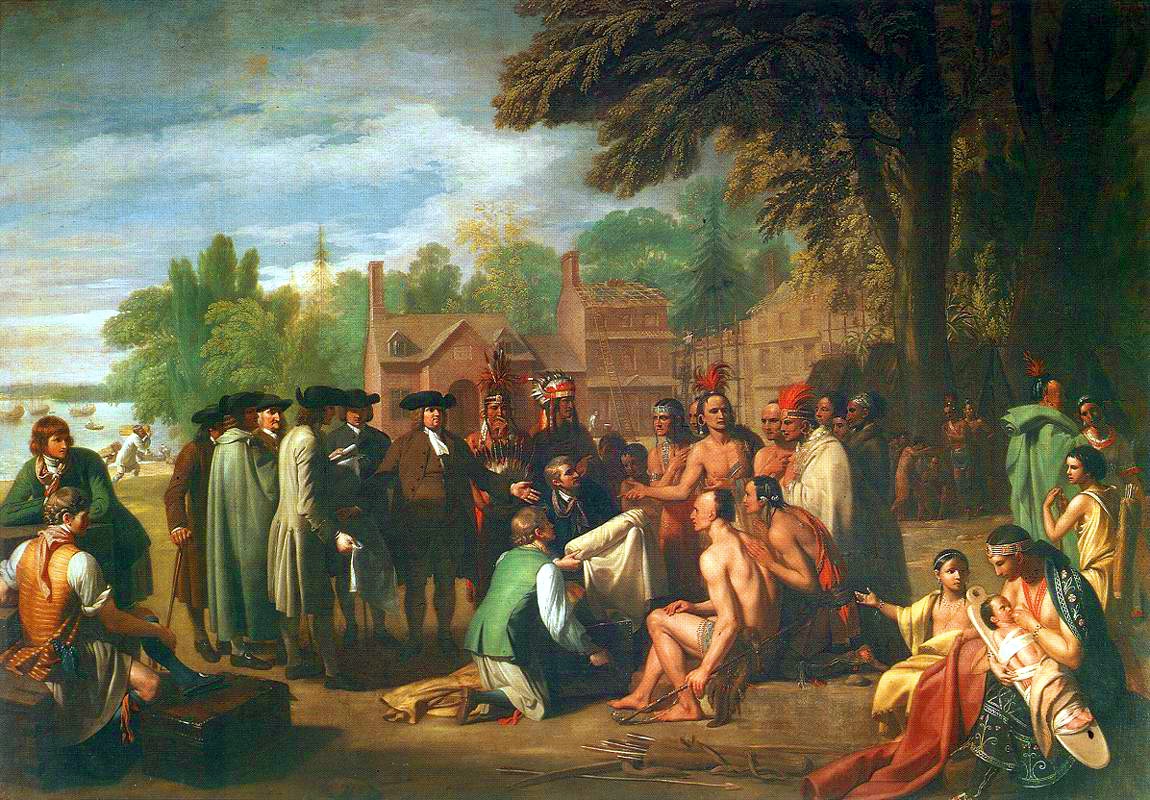
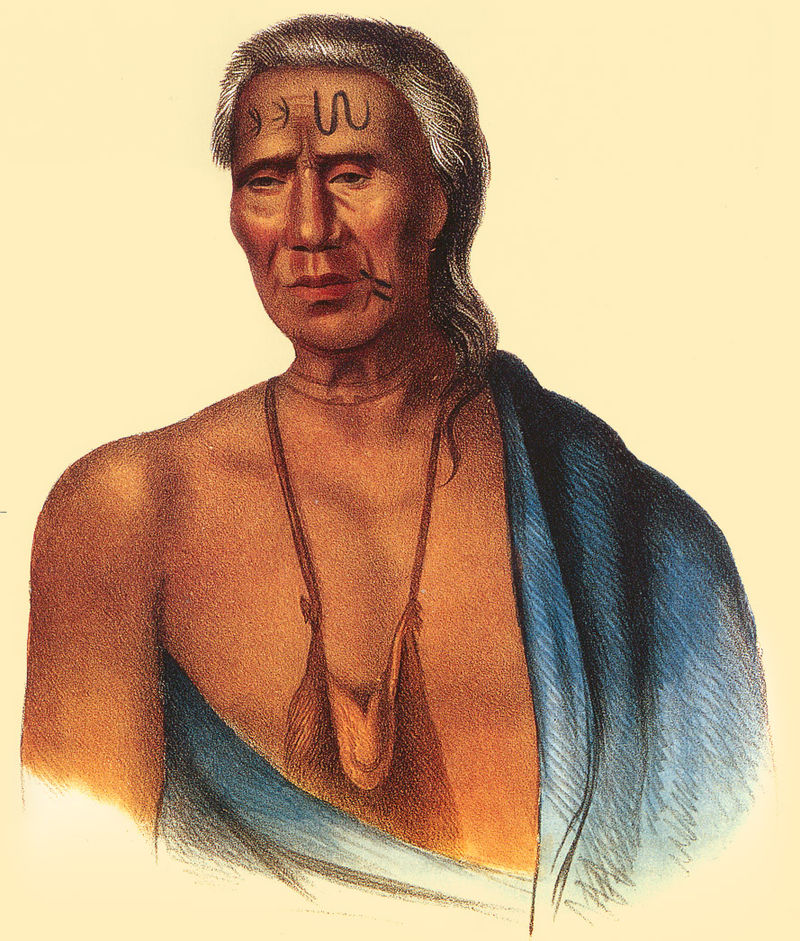
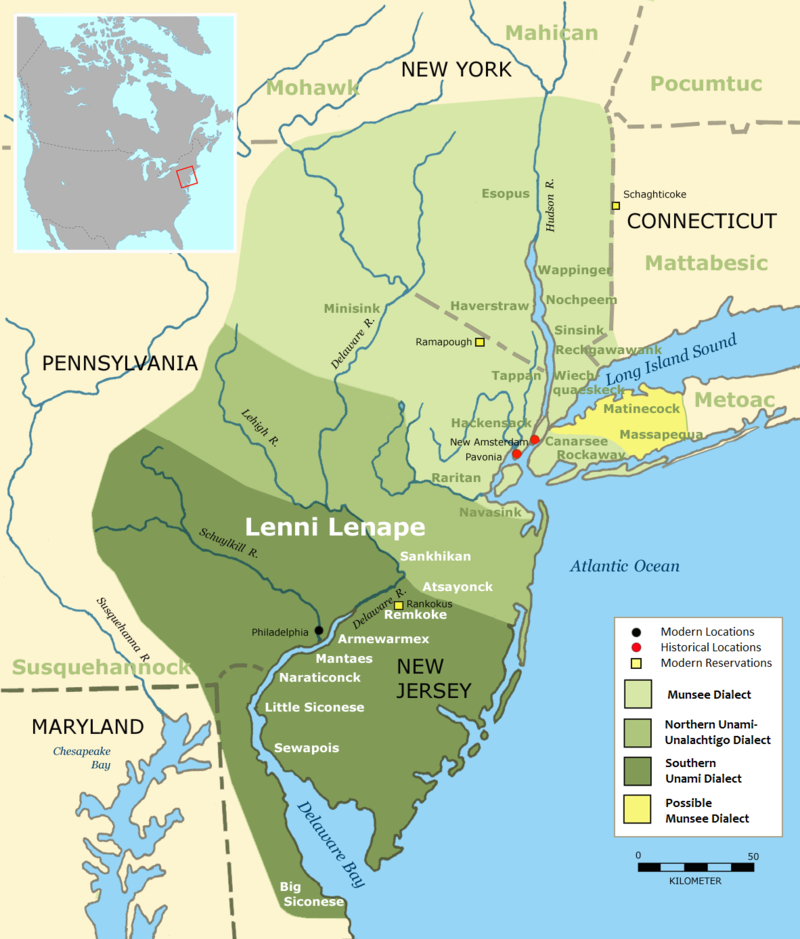
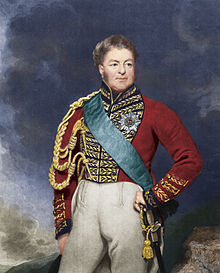 Virtually the war had long been over, although the definitive treaty of peace was not formally signed until September 3, 1783. Yet, non the less, did Monmouth county Tories and Refugees, in sheer vindictiveness of revenge, continue in their course of spoilation, destruction, and murder to the bitter end. The burning ot Toms-River was the last of their exploits having even the semblance of military character, but sporadic crimes long continued to be committed. Cases in point are the killing of Davenport, pursued with hue and cry, by exasperated patriots, and the butchery of sleeping Americans by Bacon, told on page 80 of this volume.
Virtually the war had long been over, although the definitive treaty of peace was not formally signed until September 3, 1783. Yet, non the less, did Monmouth county Tories and Refugees, in sheer vindictiveness of revenge, continue in their course of spoilation, destruction, and murder to the bitter end. The burning ot Toms-River was the last of their exploits having even the semblance of military character, but sporadic crimes long continued to be committed. Cases in point are the killing of Davenport, pursued with hue and cry, by exasperated patriots, and the butchery of sleeping Americans by Bacon, told on page 80 of this volume.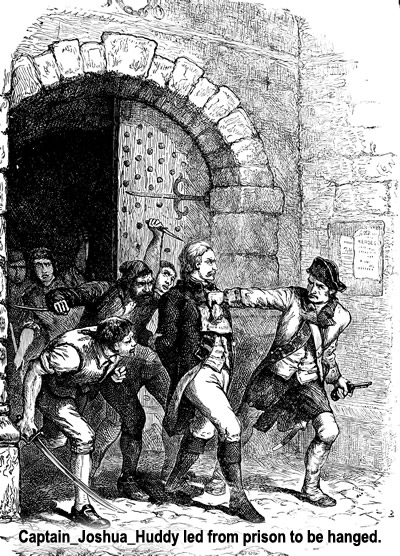 Huddy Handed Over To Lippencott
Huddy Handed Over To Lippencott